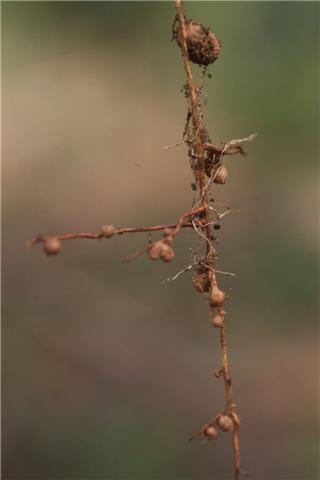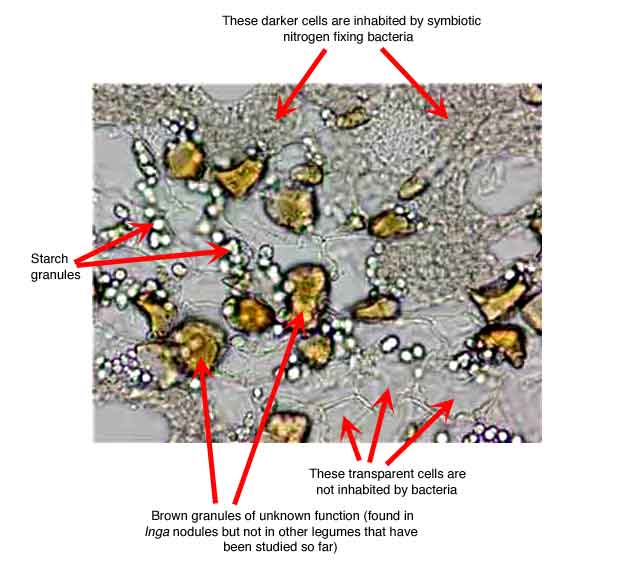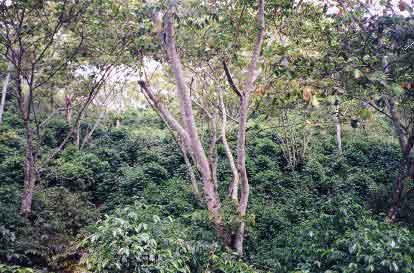What you are looking at in
this photo is a microscopic image of the inside of a root nodule taken
from a leguminous tree. Have you ever seen the small balls, or nodules,
located on the roots of certain plants such as clover, beans, or peas?
Root nodules are small structures that form on plants of a certain taxonomic
group called legumes that participate in a mutually beneficial relationship
with soil bacteria known as rhizobia. A photo of nodules attached to
a plant root can be seen below.

Nodules on
roots of Inga oerstediana
Rhizobia live
inside the nodules and ‘fix’ atmospheric nitrogen gas into
a form the plant can use as a fertilizer for its own growth and development.
This process is called nitrogen fixation. In return, the rhizobia bacteria
use some of the plant’s carbohydrates produced through photosynthesis.
Since both legume and bacterial partners benefit from this relationship,
it is called a mutualistic symbiosis.

|
|
|
Nitrogen
fixing bacteria require oxygen-free conditions to fix nitrogen,
so they only inhabit the cells in the central core of the nodule
(the darker mass of cells in the center). Though not visible
in this photo, the interiors of legume nodules are normally
pink due to the presence of leghemoglobin (similar to the oxygen-carrying
hemoglobin that causes your blood to be red). Leghemoglobin
has a high affinity for oxygen, and it locks up oxygen, thus
fostering the oxygen-free conditions needed for nitrogen fixation.
(move mouse over image to see central
core inhabited by bacteria outlined)
|
Many familiar legumes
are herbaceous plants such as beans and peas, but there are also many
legumes that are trees. The nodules in these photos were taken from
a legume tree of the species Inga oerstediana found on an organic
coffee farm in Chiapas, Mexico where it shades the smaller coffee bushes.
A picture of an organic coffee farm shaded by leguminous trees can be
seen below. Organic coffee production in the state of Chiapas, México
is a critical means of income generation for many poor Mayan peasants.
The utilization of the 'free' nitrogen provided by nitrogen fixation
can help eliminate dependence on environmentally damaging chemical fertilizers
that are too expensive or not accessible to small-scale coffee producers.
Many farmers in Mexico and elsewhere are currently learning how to harness
this valuable form of bio-fertilizer to help them produce more and better
coffee beans.

Coffee growing
underneath the leguminous tree Inga oerstediana in Chiapas,
Mexico.

